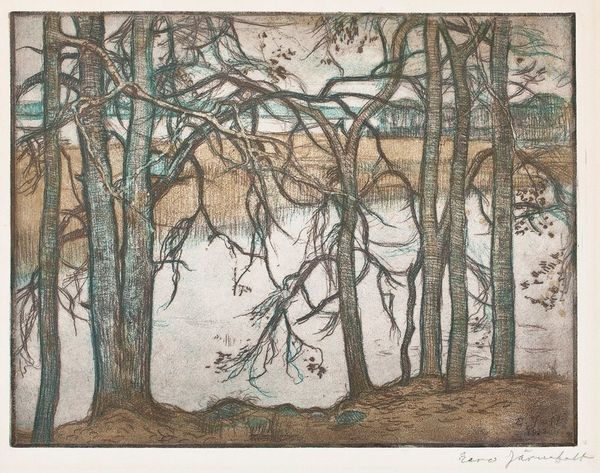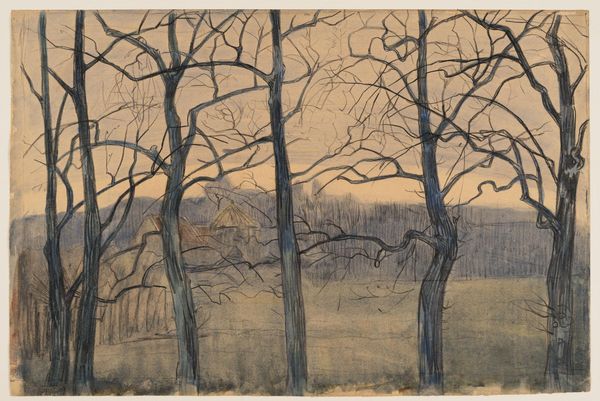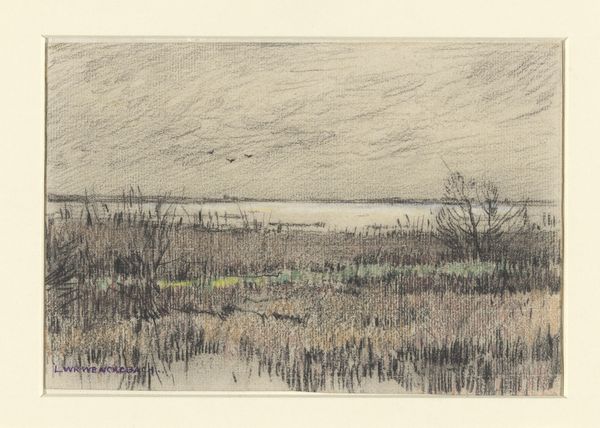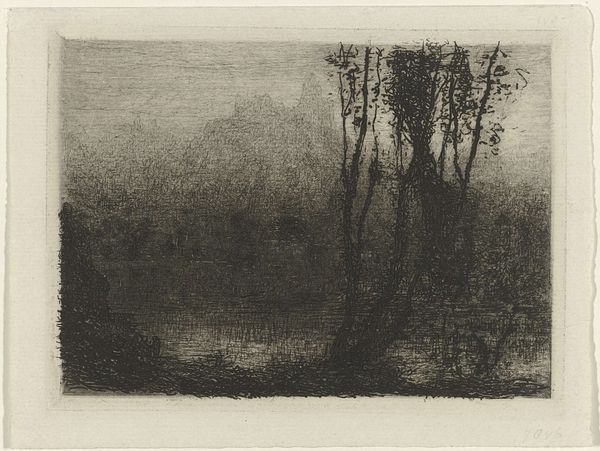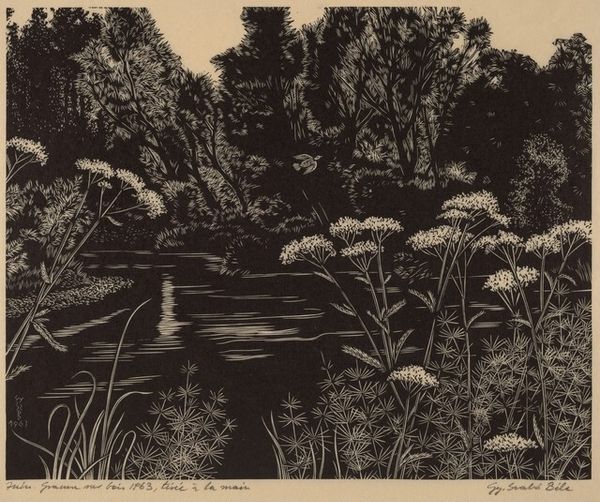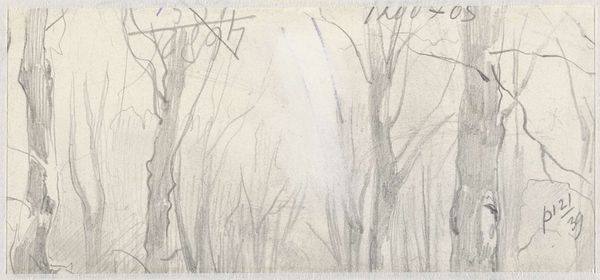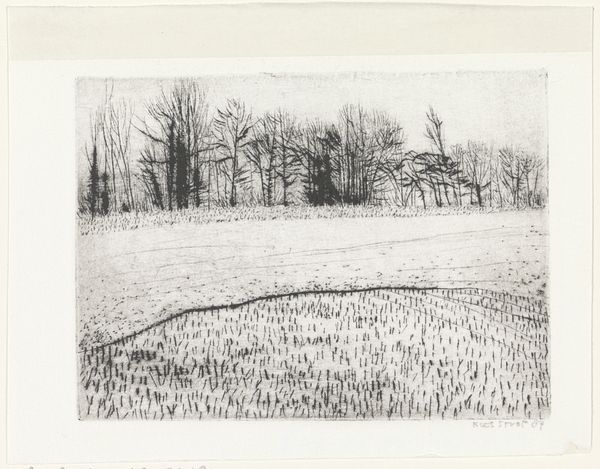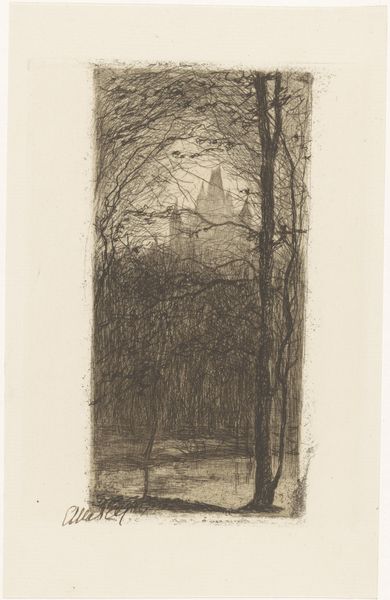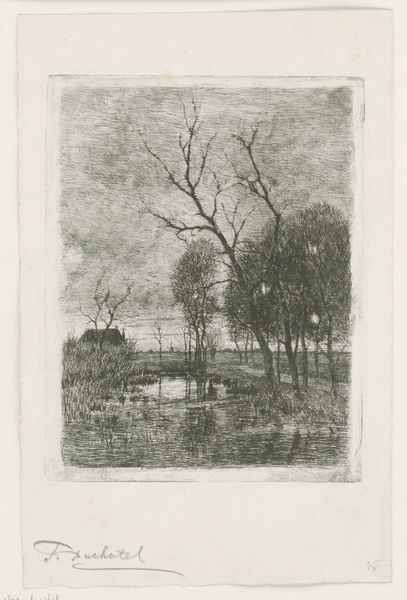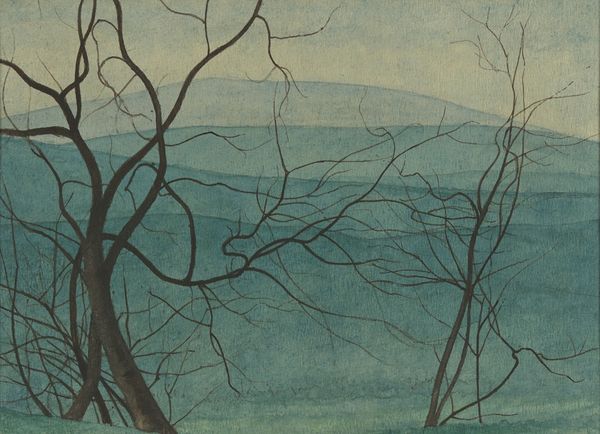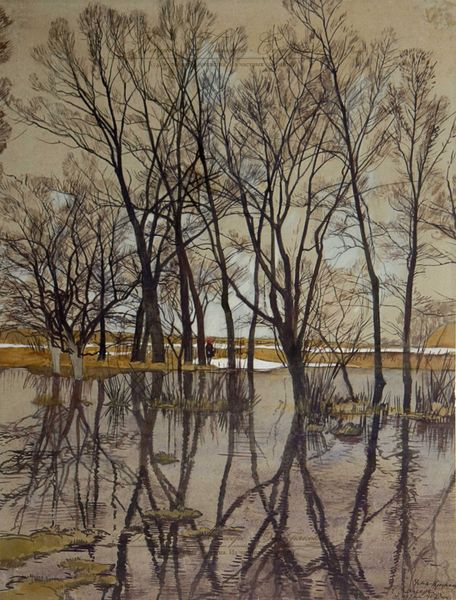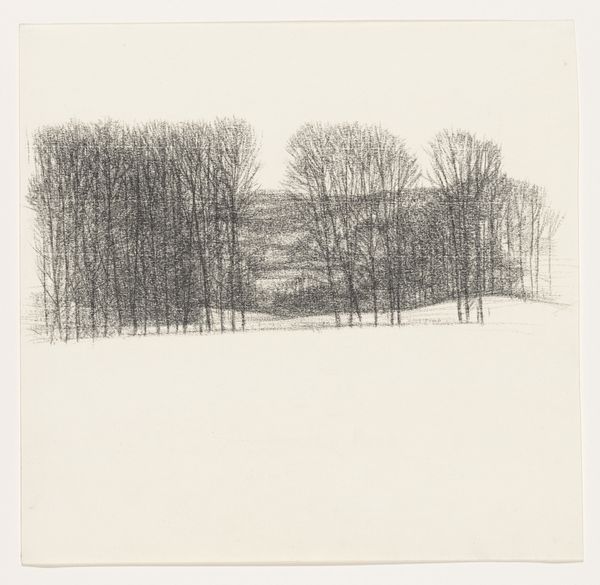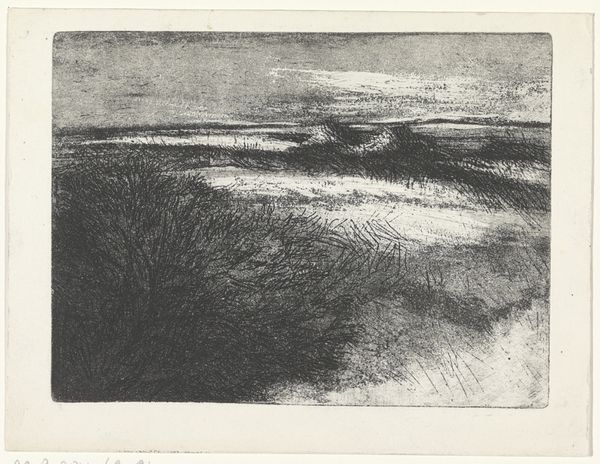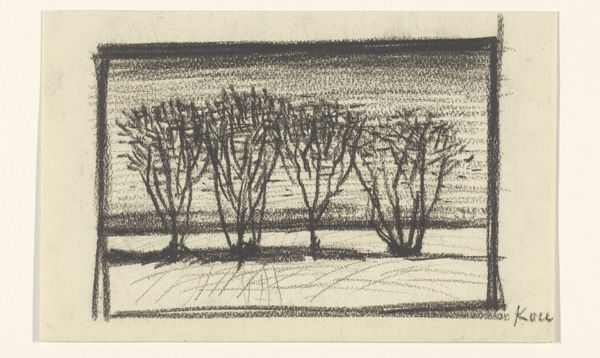
print, etching
# print
#
etching
#
landscape
#
etching
#
line
#
watercolor
#
realism
Dimensions: image: 552 x 810 mm sheet: 660 x 880 mm
Copyright: National Gallery of Art: CC0 1.0
Curator: This is "March Furrows," an etching created around the 20th century by Robert Randall Burkert. Editor: Immediately, it's got this kind of serene melancholy about it, doesn't it? The sparse trees against that slightly ominous sky... Makes you think of endings and maybe hesitant beginnings? Curator: That's interesting. The furrows in the title refer to plowed land, and thinking about the cyclical nature of agriculture, you can also consider it through an environmental lens: issues surrounding land use, rural labor, and climate change's impact on farming. What traditions are honored, what are ignored? How do race, class, and gender play out in those realities? Editor: True. I was just reacting to the stark composition—those strong vertical lines of the bare trees against the horizontal lines of the field. Reminds me of stark winter days back home, with all this pent up energy ready to burst! All it takes is one warm ray of sun... you know? Also the palette feels super intentional. All those earthy browns, creams, a moody gray up top—a color scheme stripped bare. Curator: Exactly. The realism combined with the style emphasizes line to simplify and heighten its impact—drawing attention to the geometry of human intervention in the landscape. And if you read it through a cultural lens, think about the romanticism attached to the independent American farmer that has shaped much political and social policy even as farms are increasingly consolidated into giant businesses... There is a huge disjunction there. Editor: Yeah, I can get behind that. Thinking about what ISN’T here too—no people, no animals, just the land kind of… awaiting. Makes me ponder our relationship with nature, or at least what we perceive that relationship to be. This constant need to "conquer" nature for resources? Also what is going to be done with this land? Curator: I'd argue Burkert leaves the question pointedly open. Perhaps hinting at the fraught history embedded in our relationship to land. What is included and what is obscured? Editor: Food for thought, truly. It's interesting how an image of an open field can contain so many hidden layers. Curator: Precisely. The layering itself mirrors how the seemingly simple scene has an accumulated historical weight behind it. Editor: Definitely gave me more to chew on. I am feeling ready for a walk in nature now myself.
Comments
No comments
Be the first to comment and join the conversation on the ultimate creative platform.
